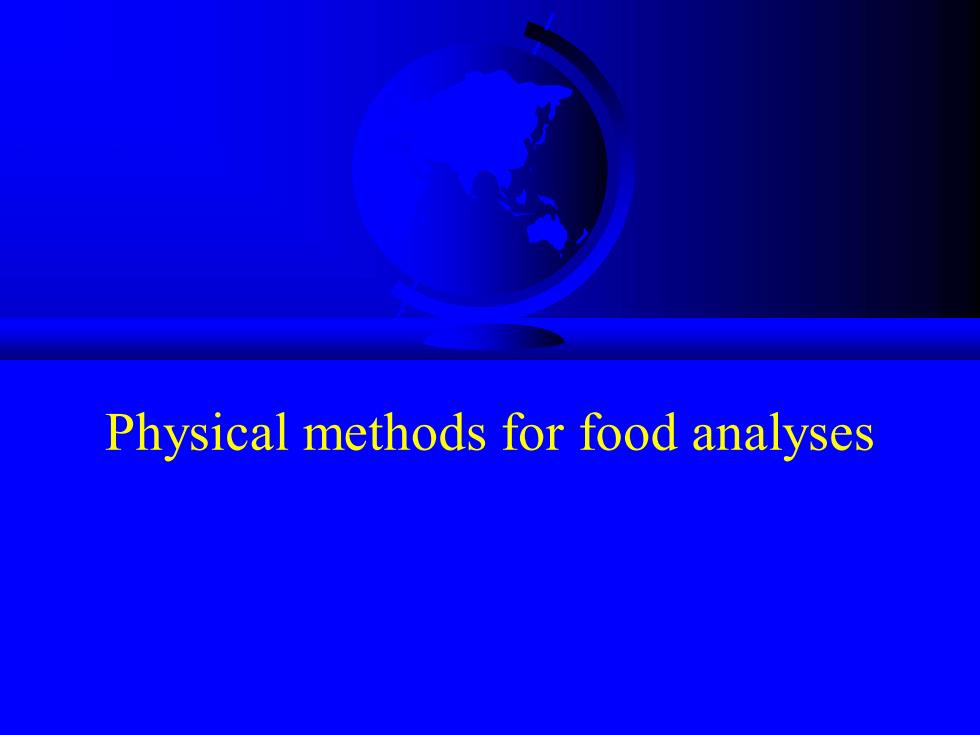
Physical methods for food analyses
Physical methods for food analyses
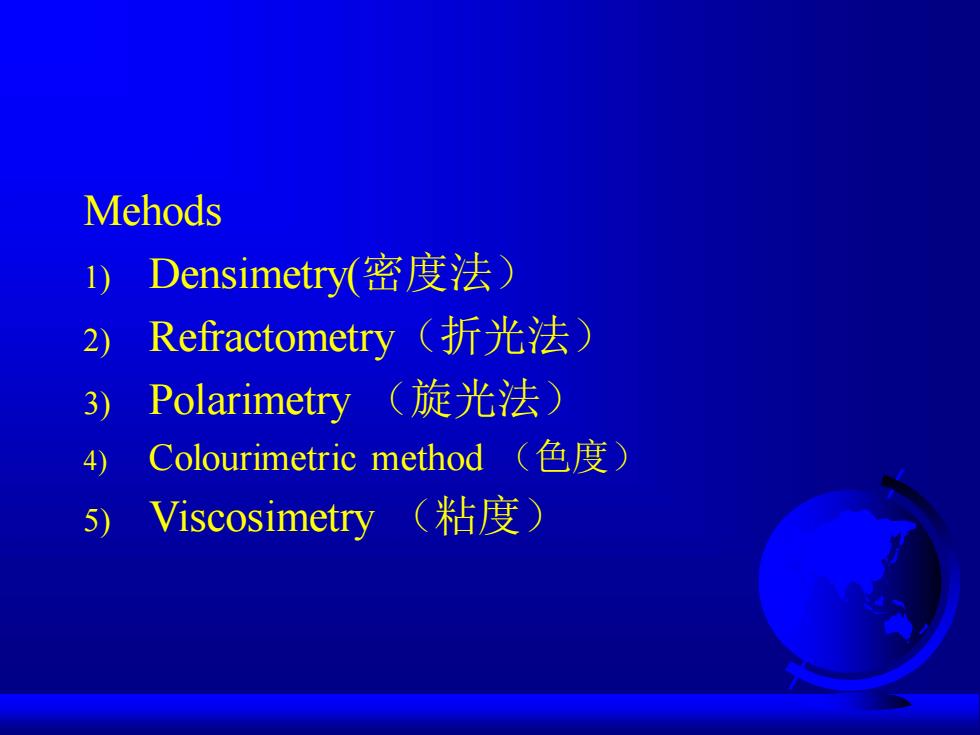
Mehods 1) Densimetry(密度法) 2) Refractometry(折光法) 3) Polarimetry (旋光法) 4) Colourimetric method(色度) 5) Viscosimetry (粘度)
Mehods 1) Densimetry(密度法) 2) Refractometry(折光法) 3) Polarimetry (旋光法) 4) Colourimetric method (色度) 5) Viscosimetry (粘度)
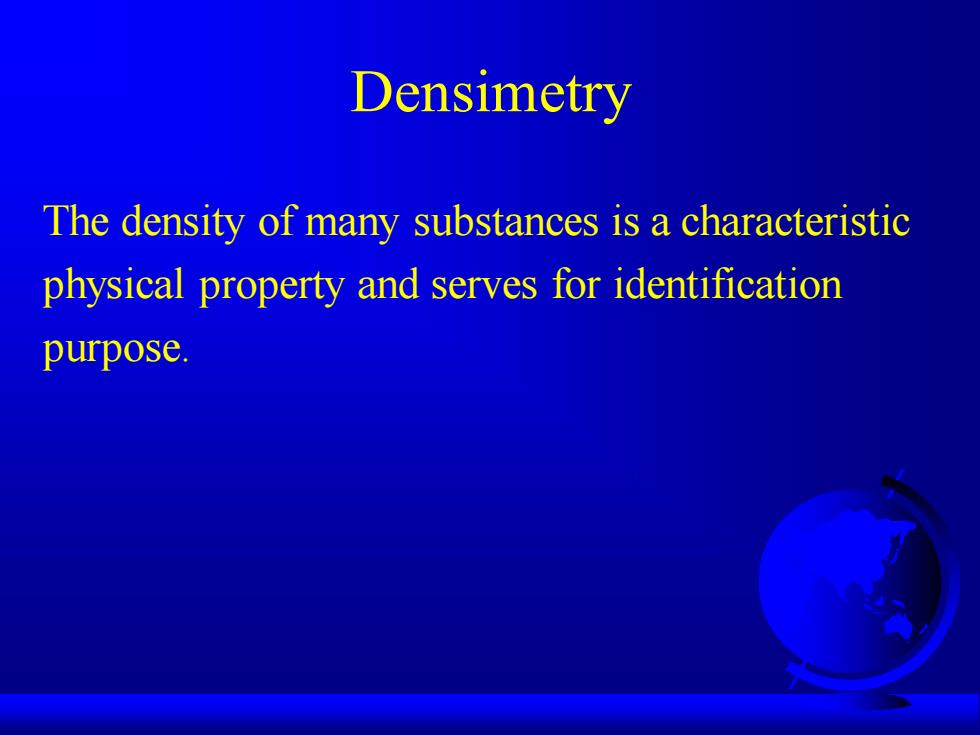
Densimetry The density of many substances is a characteristic physical property and serves for identification purpose
Densimetry The density of many substances is a characteristic physical property and serves for identification purpose
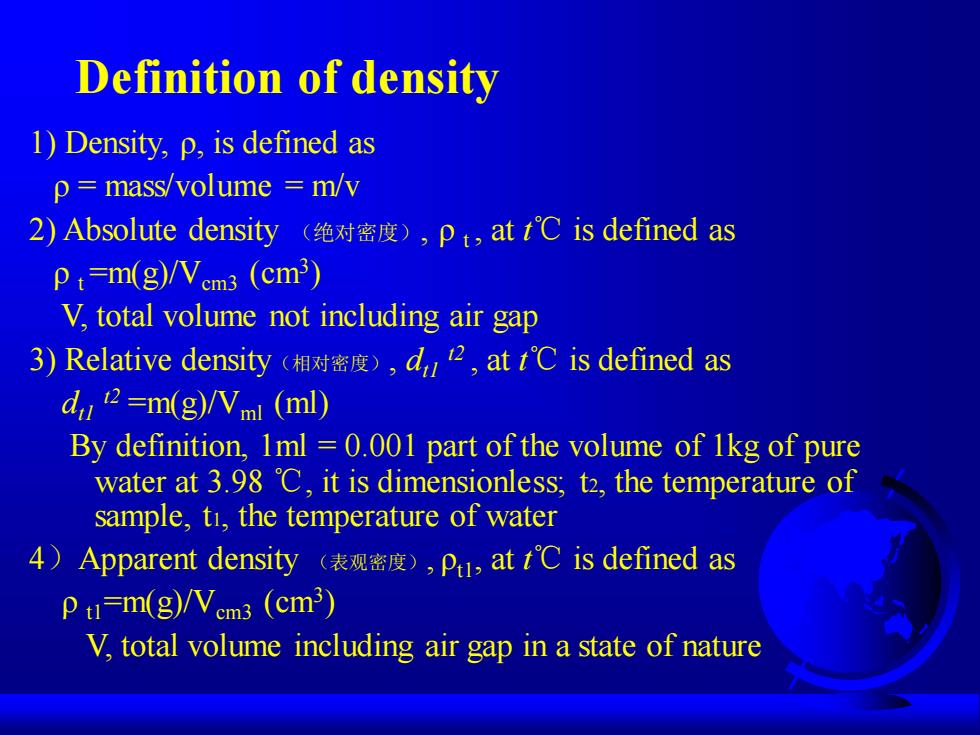
Definition of density 1)Density,p,is defined as p mass/volume m/v 2)Absolute density(绝对密度),p,att℃is defined as Pt=m(g)/Vcm3 (cm) V,total volume not including air gap 3)Relative density(相对密度),d,P,at t'C is defined as du2=m(g)/Vml (ml) By definition,1ml =0.001 part of the volume of 1kg of pure water at 3.98 C,it is dimensionless;t2,the temperature of sample,ti,the temperature of water 4)Apparent density(表观度),P1,at t'C is defined as P t=m(g)/Vem3 (cm) V,total volume including air gap in a state of nature
1) Density, ρ, is defined as ρ = mass/volume = m/v 2) Absolute density (绝对密度), ρ t , at t℃ is defined as ρ t =m(g)/Vcm3 (cm3 ) V, total volume not including air gap 3) Relative density(相对密度), dt1 t2 , at t℃ is defined as dt1 t2 =m(g)/Vml (ml) By definition, 1ml = 0.001 part of the volume of 1kg of pure water at 3.98 ℃, it is dimensionless; t2, the temperature of sample, t1, the temperature of water 4)Apparent density (表观密度), ρt1, at t℃ is defined as ρ t1=m(g)/Vcm3 (cm3 ) V, total volume including air gap in a state of nature Definition of density
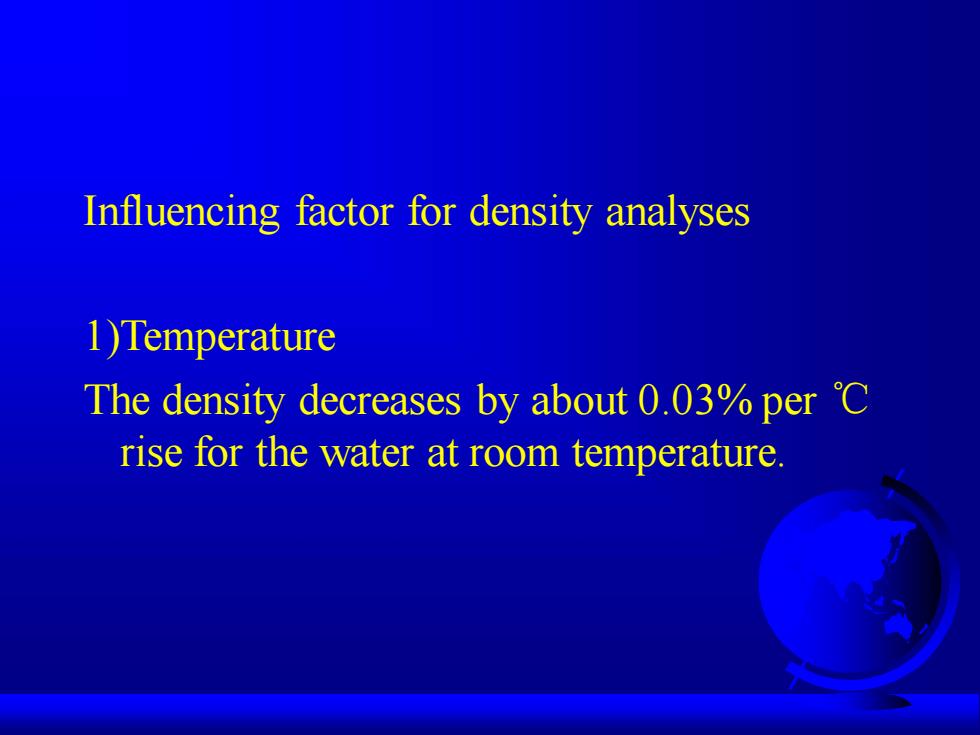
Influencing factor for density analyses 1)Temperature The density decreases by about 0.03%per C rise for the water at room temperature
Influencing factor for density analyses 1)Temperature The density decreases by about 0.03% per ℃ rise for the water at room temperature